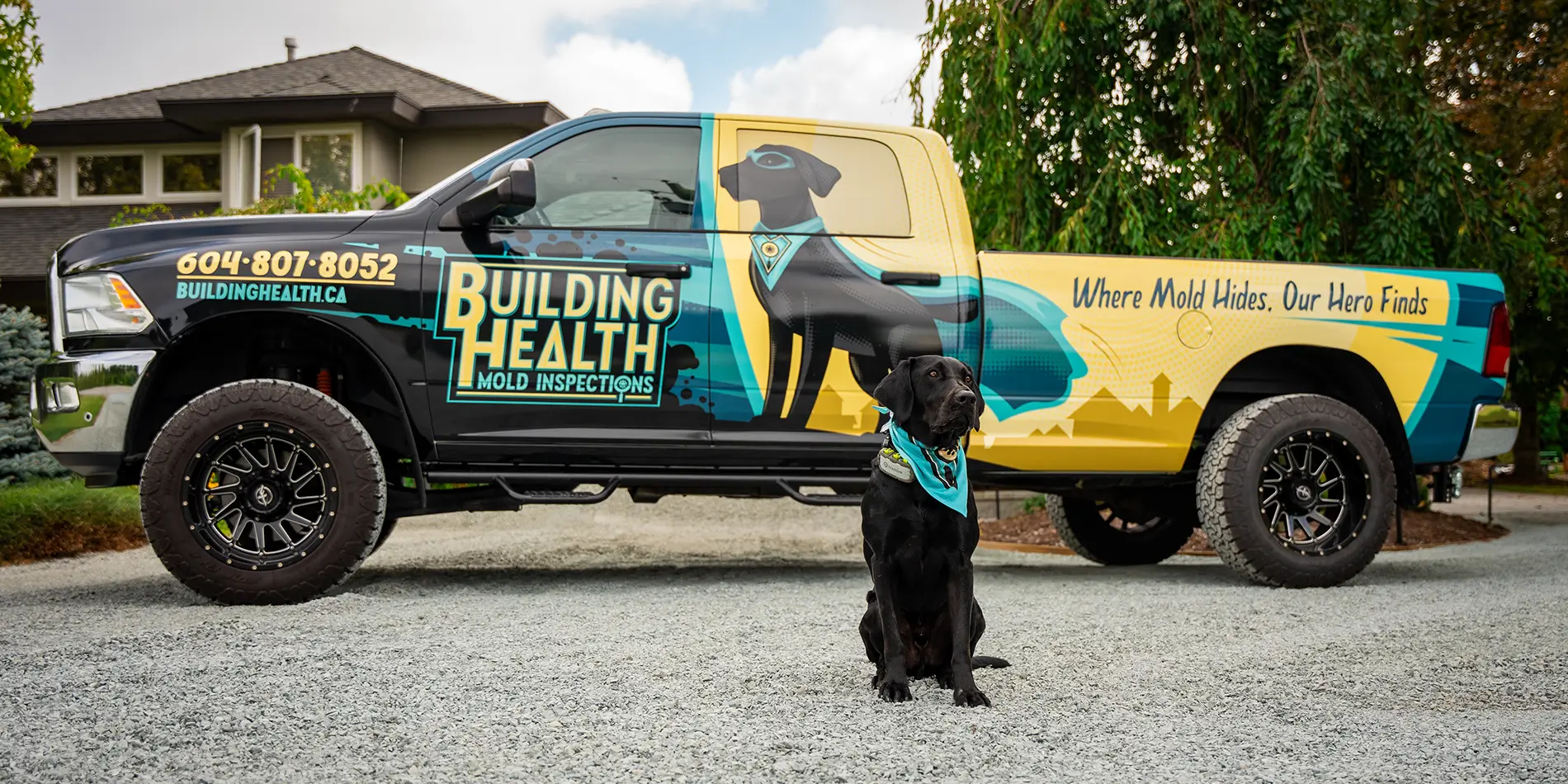The Nose That Knows: Meet Our Certified Mold Dog
At Building Health Mold Inspections, we bring an unparalleled tool to mold detection: our certified mold detection dog, Nitro. With a sense of smell thousands of times more powerful than humans, our mold dog is key to finding hidden mold that other inspectors often miss.

Beyond Human Senses
Why a Dog is the Best Tool for Finding Mold
When it comes to pinpointing hidden mold, our mold dog brings accuracy, efficiency, and a non-invasive approach to every inspection.
Unmatched Accuracy
Our mold dog can detect mold odors at concentrations far below what humans or even electronic sensors can register.
Non-Invasive Detection
Without needing to open walls or cause damage, our dog can accurately locate mold behind barriers, under floors, and in ceilings.
Efficiency and Speed
A mold dog can thoroughly inspect large areas much faster than traditional methods, saving you time and ensuring comprehensive coverage.
A True Professional
Rigorous Training for Reliable Results
Nitro, our mold detection dog, is a highly trained professional, having undergone an intensive training program to ensure peak performance and accuracy in real-world scenarios. His exceptional abilities are backed by stringent certification.

We’ve Got Answers—Sniff Tested and Approved
We understand you might have questions about how a canine inspector works. Here are answers to some of the most frequently asked questions.
Our certified mold dog uses its incredibly powerful sense of smell to detect the unique odors (VOCs) released by mold, even when it's hidden behind walls or under floors.
Absolutely. Our mold dog is well-behaved, friendly, and trained to work calmly and professionally in various environments, ensuring safety and minimal disruption.
Yes, this is one of their greatest strengths. The dog's nose can detect mold odors coming from behind barriers and in hard-to-reach areas, which is invaluable for hidden mold.
No, it's a powerful enhancement. Our mold dog efficiently locates potential mold sources, and then our human inspector follows up with visual assessment and, if necessary, scientific testing for confirmation.
When our dog gives a positive alert, our human inspector then focuses on that specific area for further investigation, which may include moisture readings or taking samples for lab analysis.